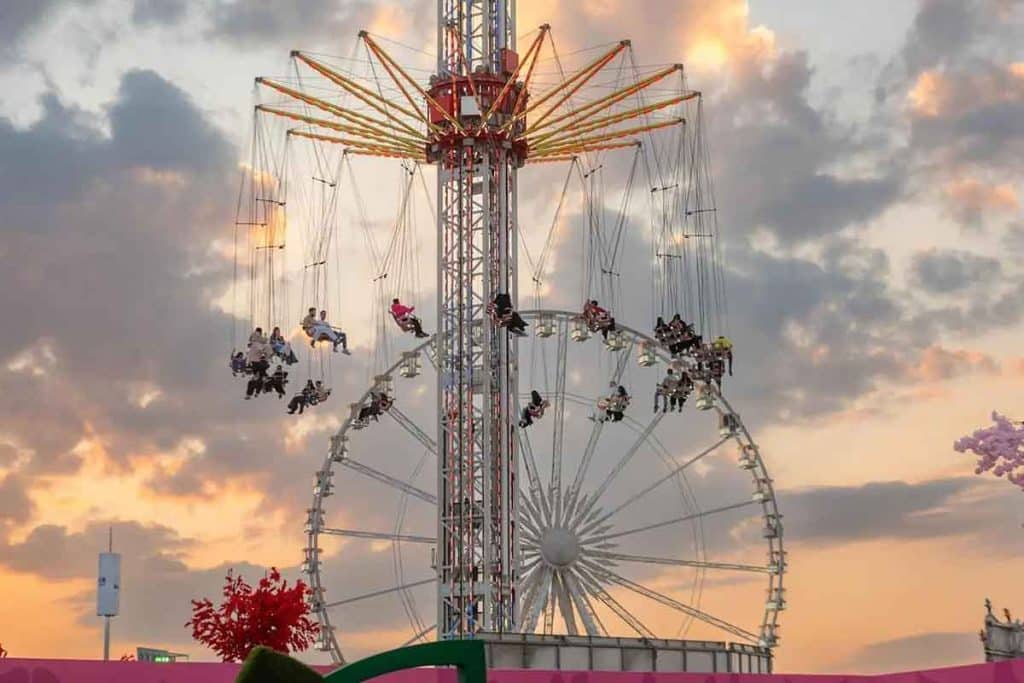Saudi Arabia Marks Vision 2030’s 8-Year Anniversary

Today marks the eight-year anniversary of Saudi Arabia’s Vision 2030, an ambitious blueprint aimed at transforming the Kingdom into a pioneering model on the global stage.
Launched on April 25, 2016, by King Salman bin Abdulaziz Al Saud and spearheaded by Crown Prince Mohammed bin Salman, Vision 2030 has reshaped the nation’s economic and social landscape, propelling it towards a more diversified and sustainable future.
What is Vision 2030?
At its core, Vision 2030 is centered around three strategic pillars: An Ambitious Nation, A Thriving Economy, and A Vibrant Society.
Each pillar is underpinned by a series of ambitious programs and initiatives designed to drive comprehensive reform and development.
“My first goal is for our country to be a successful and pioneering model in the world at all levels, and I will work with you to achieve that,” said King Salman bin Abdulaziz Al Saud at the time of the launch.
“I am pleased to present to you the vision of the present for the future, which we want to start working with today for tomorrow, as it expresses all our ambitions and reflects the capabilities of our country,” said Crown Prince Mohammed bin Salman.
Here’s a look at what Saudi Arabia has achieved under the Vision so far.
What has Vision 2030 achieved so far?
Over the initial five years (2016-2020), Saudi Arabia made significant strides across all three pillars. Initiatives improved education, healthcare, housing, and the environment while preserving cultural heritage. The economy diversified, with non-oil revenues experiencing sharp growth in sectors like tourism and entertainment. The government streamlined systems, enhancing efficiency and transparency, while human capital development programs equipped citizens with future-ready skills.
The Kingdom’s transformation gained further momentum from 2021 to 2023. The National Investment Strategy, launched in 2021, aims to attract over SAR 12 trillion in investment by 2030 and create 1.8 million jobs. Saudi Arabia’s Public Investment Fund (PIF) grew to become the world’s largest sovereign wealth fund, with assets surpassing $600 billion by 2023.
Megaprojects like NEOM and Qiddiya advanced rapidly, with NEOM launching its first tourist destination, The Line, in 2023. The Kingdom’s ranking in the Global Competitiveness Index rose to 25th in 2023, on track to achieve its top 15 target by 2030.

Non-oil GDP grew at an average annual rate of 4.5 percent from 2021-2023, driven by sectors such as mining, manufacturing, and finance. Women’s labour force participation increased to 38 percent in 2023, aligning with the 40 percent target, reflecting the Kingdom’s commitment to gender equality and social reforms.
Saudi Arabia hosted major global events like the G20 Summit, Formula E, and the Diriyah E-Prix, boosting its tourism credentials. Digital infrastructure expanded, with 95 percent of populated areas covered by 5G and fiber broadband by 2023, while health clusters improved access to specialised care, reducing wait times for specialists to under two weeks.
How Saudi Arabia fared on the global stage
Saudi Vision 2030 has propelled the Kingdom to the forefront of various international rankings, showcasing its remarkable transformation.
In 2023, Saudi Arabia achieved the top global ranking in the Government Strategy Index for Artificial Intelligence and second in the Global Cybersecurity Index.
The Kingdom secured the third position as one of the happiest countries in the Arab World in the 2022 World Happiness Report and sixth in the peer group rankings for attitude and values in the World Competitiveness Yearbook 2022.

To establish itself as a global tourism hub, the Kingdom aims to draw 100 million visitors annually by 2030, backed by a substantial $1 trillion investment in the tourism sector as part of the National Tourism Strategy. Efforts include developing major entertainment, heritage, and cultural sites like Qiddiya near Riyadh, AlUla in the northwest, and Al-Soudah in the Asir region, as well as streamlining travel procedures through digitisation and introducing e-visa systems.
Investment and sustainability at the forefront
The Kingdom plans to invest $7 trillion to implement Vision 2030, with funding from the PIF and the private sector. Foreign direct investment reached $640 billion in 2022, reflecting the nation’s attractiveness as an investment destination.
Saudi Arabia has also prioritised sustainability, aiming to achieve zero carbon emissions by 2060.
Megaprojects like NEOM, Amaala, Red Sea, Qiddiya, and Diriyah Gate have gained global renown, serving as comprehensive models for sustainability and lifestyle. Among these, NEOM’s “The Line” stands out as a revolutionary smart city concept devoid of cars, streets, and carbon emissions, poised to boost tourism and establish the Kingdom as one of the world’s most desirable places to live.
Looking ahead
Saudi Vision 2030 is a testament to visionary leadership and unwavering commitment. The Kingdom has made remarkable strides in diversifying its economy, empowering its society, and elevating its global standing.
With an eye on sustainability and a dedication to innovation, Saudi Arabia is not only transforming its own future but also setting an inspiring example for the world.
As the Kingdom enters its ninth year of Vision 2030 implementation, the achievements thus far serve as a solid foundation for continued progress and transformation, solidifying Saudi Arabia’s position as a pioneering force on the global stage.




